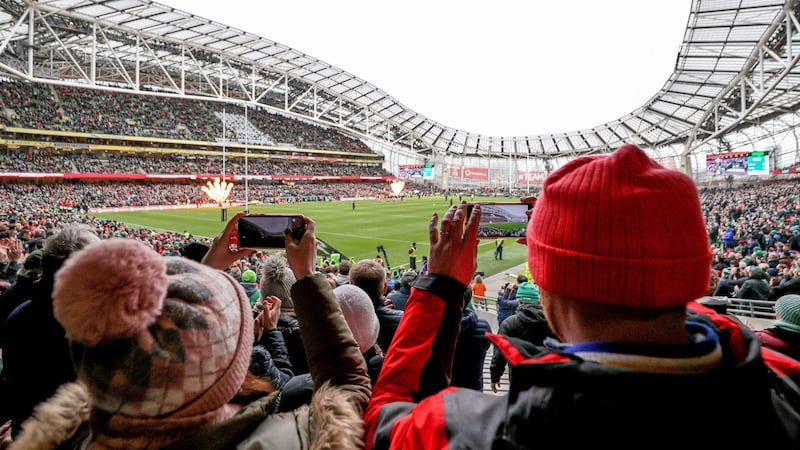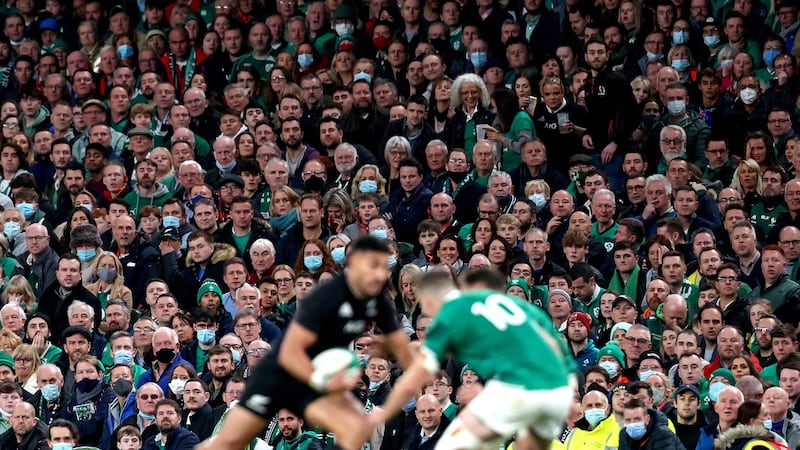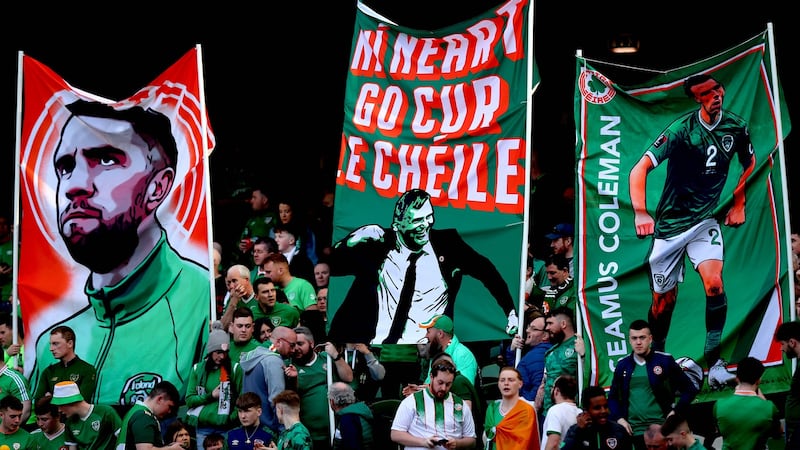Last Saturday week at the Ireland-Scotland Six Nations game, an 80-year-old rugby supporter was taken to his first game in the Aviva Stadium in several years. It had barely kicked off when he was first obliged to stand up for someone to walk past him or return to their seat, usually with a tray of pints.
This constant flow of people became so tediously repetitive that he began to keep count. By the time the game had finished, he reckoned he had stood up 73 times. He won’t be going back.
His experience was a common one, with the constant toing and froing to various bars the main bugbear and a contributing factor to the relative lack of atmosphere.
At one point, about 15 minutes into the Scottish game, all that could be heard was the hum of chatter around the ground, with first-hand accounts of people constantly talking to each other and/or on their mobile phones.
True, the Welsh game was an early afternoon kick-off and the Italian match fell on a Sunday, whereupon the Azzurri were quickly reduced to 13 players, thus removing any remote element of competition.

Yet there were no excuses for the crowd’s lack of engagement in the Scotland game: a late Saturday afternoon kick-off, glorious weather, the bars overflowing beforehand and a Triple Crown on the line along with a tilt at the Six Nations title.
The contrast with the more engaged crowds at the electrifying Stade de France and Twickenham games was particularly stark this season. True, they have capacities of 80,000 and 82,000 respectively, but that doesn’t explain why the crowds were less engaged at the Aviva Stadium. After all, the Aviva atmosphere fairly crackled for a Sunday afternoon game last November – the key being, of course, that the All Blacks were in town.
Not only are they the most revered team in the world, but the pre-match pageantry, and specifically the haka, encourages the Irish supporters to be seated well before kick-off. Furthermore, Ireland are the underdogs. By contrast, Irish crowds don’t do favouritism very well.
The blaring of dodgy music has contributed to supporters being distanced from the experience. They become consumers and observers, rather than participants.
Time was when Irish crowds were known for their singing of songs. One attempt at The Fields of Athenry during the Welsh game died out with an Irish knock-on. When a French player knocked on in the second half against England at the Stade de France, the crowd continued a rousing La Marseillaise. Eventually there were two renditions of the Fields in the last 10 minutes of the final game against Scotland.
Singing coach
Whereas Bread of Heaven, Flower of Scotland and Swing Low are all still belted out in the Principality, Murrayfield and Twickenham, Ireland finished a distant second last in the singing stakes. Irish fans won’t sing Amhrán na bhFiann or Ireland’s Call during a game, but, as its sung by Munster and Connacht fans as well, perhaps The Fields has lost some of its potency.
Maybe it’s time to let the Irish supporters choose a new song. Danny Boy, adopted as the anthem for Barry McGuigan fans, springs to mind. Perhaps Ireland needs a singing coach.

A la their football counterparts, Andy Farrell’s team is playing the most enterprising brand of rugby by an Irish side in yonks, maybe ever, so no excuses there either. Yet last Saturday’s football friendly between the Republic of Ireland and Belgium further highlighted the contrast.
Likewise the bars stay open during the game; the difference is that the majority are more engaged in what’s unfolding in front of them. The crowd probably contained a higher percentage of people who play or have played the game, and who are fans of League of Ireland and/or English clubs and actually go to matches on a more regular basis. They are evidently more inclined to wear green, to cheer and sing and roar.
This used to be true of the old Lansdowne Road and, as is often the case when the All Blacks and England are the visitors, of the Aviva too. But the demographic of the Irish crowds at home rugby internationals appears to have changed over the years.
It appears to contain more “daytrippers”, who come along for the occasion. With clubs further affected by the pandemic, have genuine rugby supporters been priced out of home matches? Certainly there’s plenty of anecdotal evidence of supporters who no longer wish to be there, having simply become weary of the experience.
Even one recently retired international player was told by his parents after an Aviva game: “Son, we love you very much, but don’t ever ask us to come back there again.”
The IRFU’s pre-match and interval entertainment could do more to enliven and engage the crowd than countdowns to kick-off. “Ten, nine, eight . . .” Ah please. Time too to move on from “stewards to end-of-match positions, please”.
In the Stade de France the PA actually involved the crowd. When the French team line-up was read out, the PA provided the first name, thus obliging the crowd to roar the surname. Similarly, when Antoine Dupont scored the game’s opening try, the PA announced: “Try for France scored by Antoine . . .” Cue the crowd to again roar his surrname.
One reader wrote to the union over 20 years ago suggesting that, for example, they play Riverdance and the like.
Irritating experience
Another supporter tells of a conversation with three people at a home match, one of whom was a brother of an Irish replacement. Fully 15 minutes before half-time they stood up to go the bar, explaining that otherwise the queue would be too long. They returned 20 minutes into the second half, just in time to see the brother come onto the pitch.
Whatever about someone having to stand up 73 times during a match, it must be an especially irritating experience for anyone seated adjacent to a stairway.

Even at really tense moments in a match it is not unusual to find fans leaving their seats for a drink, forcing everyone in the row to stand up and block the view of the people in the row behind. They return with a tray full of beer and are in danger of spilling it over the spectators. Indeed, by the end of the game the procession leads to a stream on the floor, so to speak.
One non-rugby fan who was brought to the Scottish game was surprised when his rugby-supporting mate turned to him 15 minutes before the final whistle and said: “Shall we leg it?”
The IRFU and the Aviva could learn from Croke Park. On big All-Ireland days in both hurling and Gaelic football, the crowd is altogether more colourful, engaged and louder.
A key difference is that the bars open well in advance of the throw-in, and then close just beforehand, before opening at half-time and full-time, while no alcohol is permitted to be brought inside the stadium. They also have thousands of pints pre-poured approaching half-time, something which one Croke Park caterer tried to implement at the Aviva, to her astonished boss.
The point being if the same restriction on preventing alcohol being carried into the stands was introduced for rugby matches at the Aviva Stadium, it would greatly improve matters at a stroke.
But the IRFU have a big problem with the Aviva match-day experience, and they need to address it.
gthornley@irishtimes.com


















